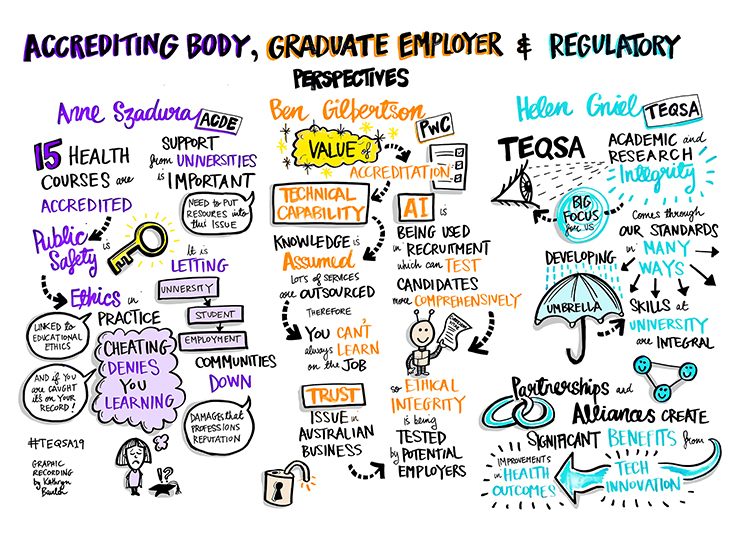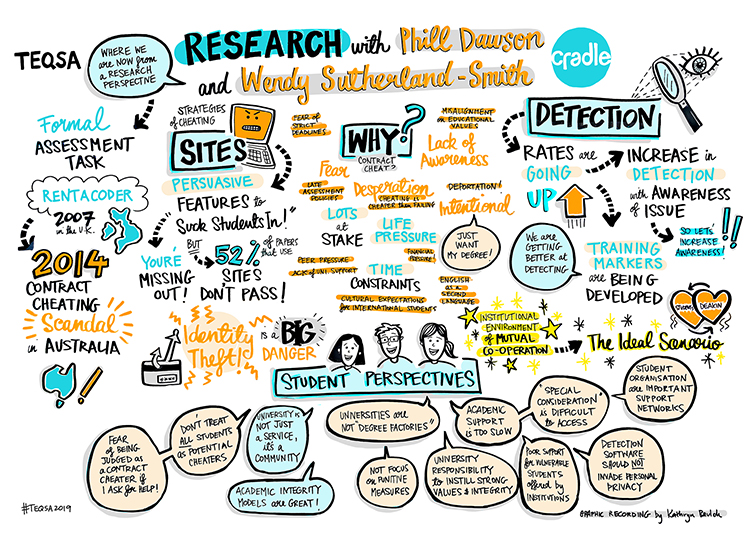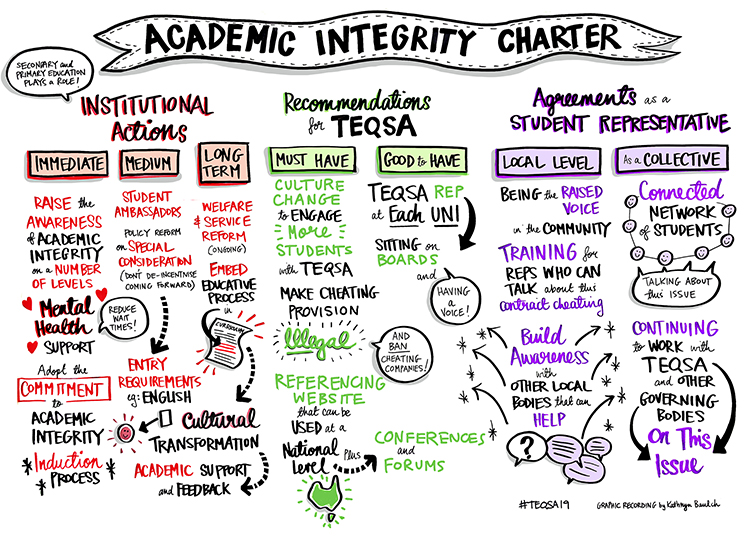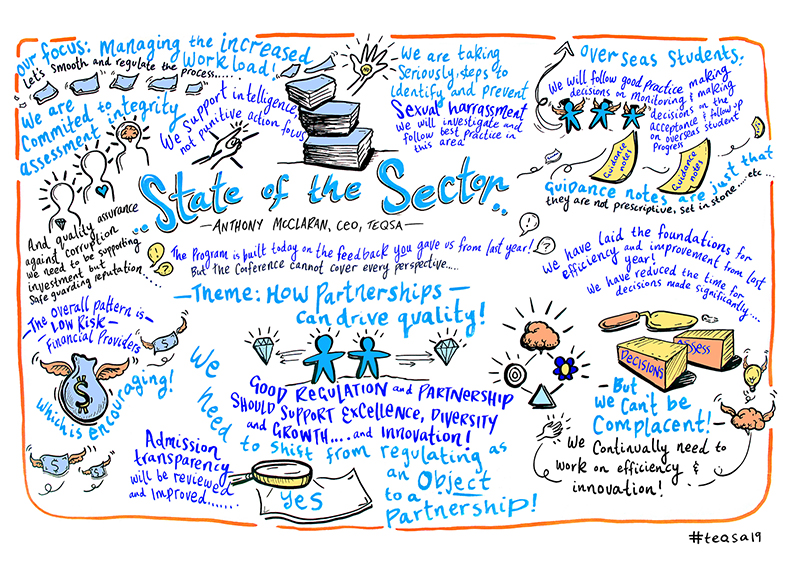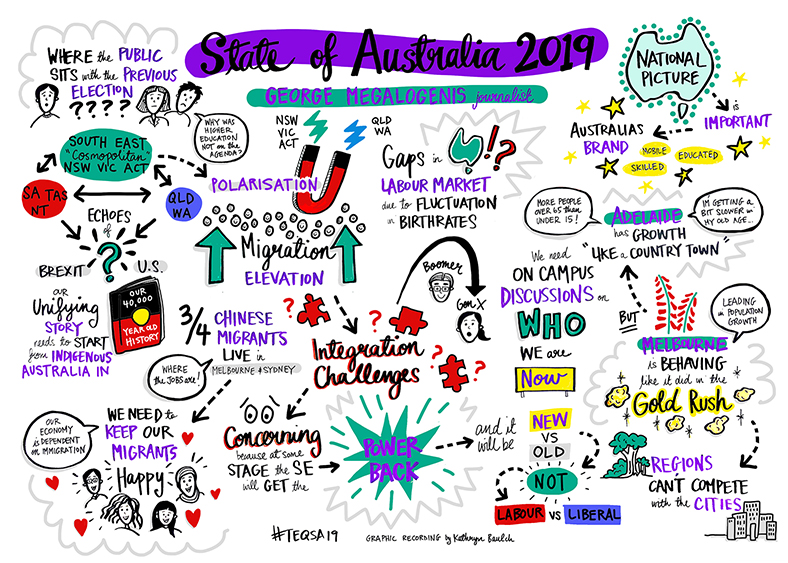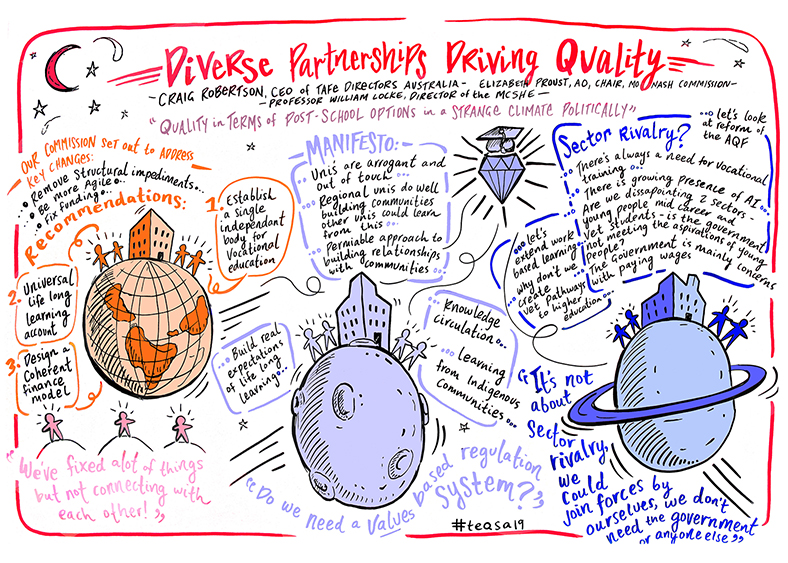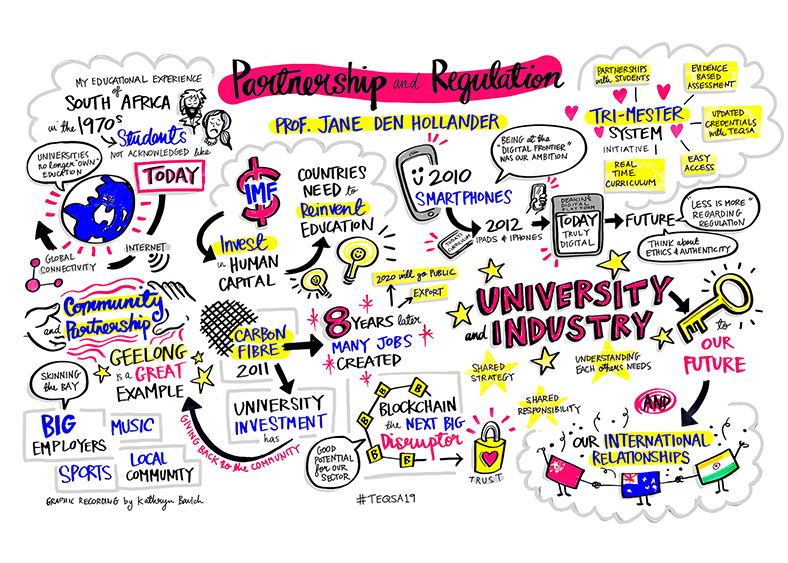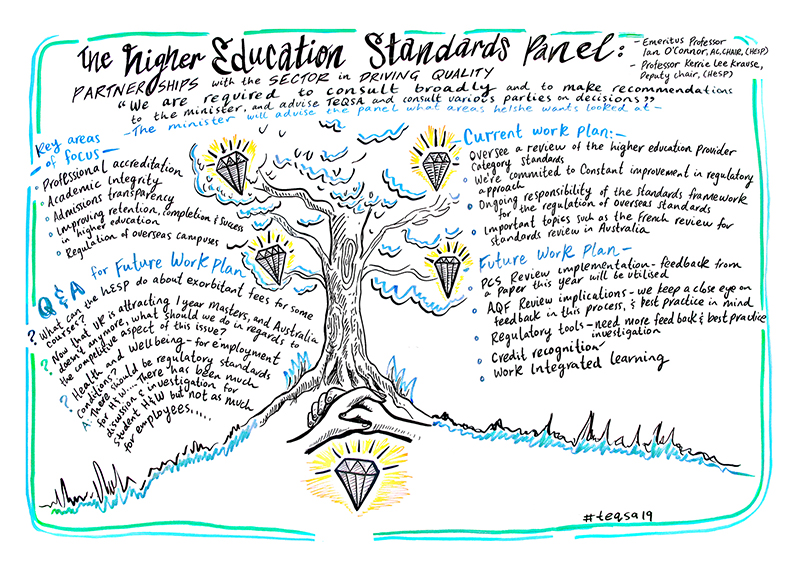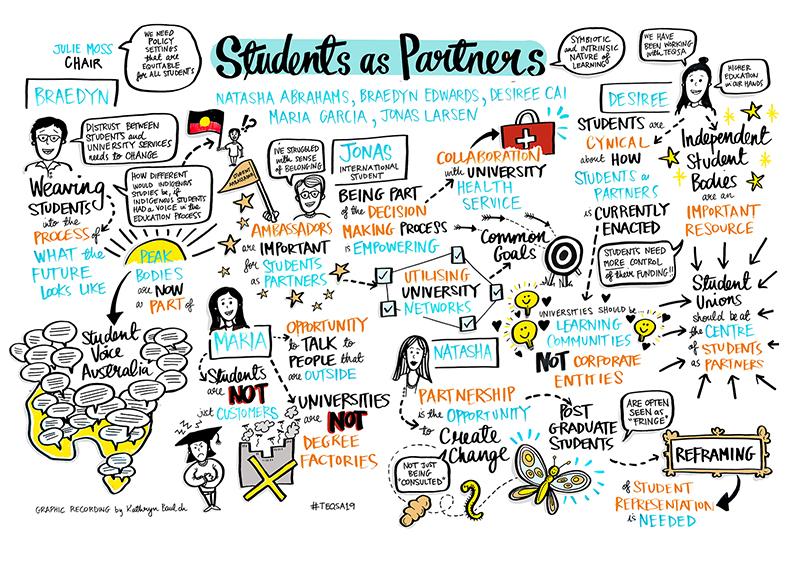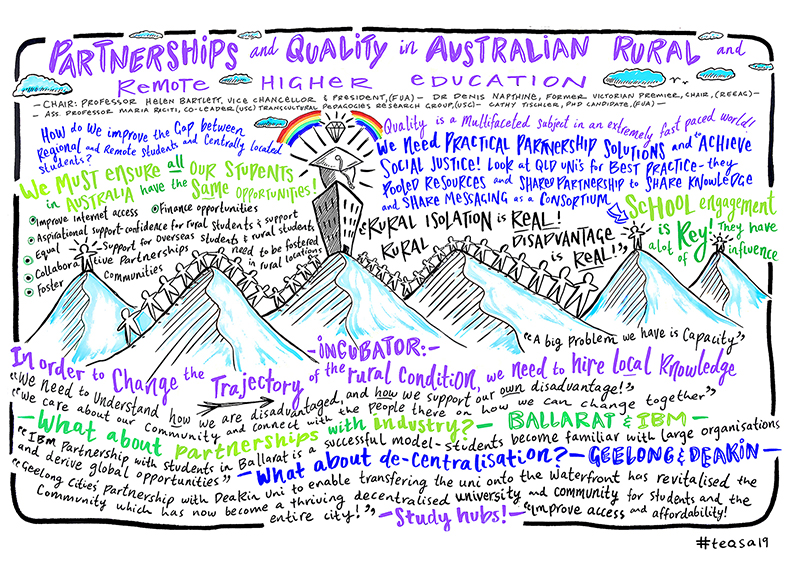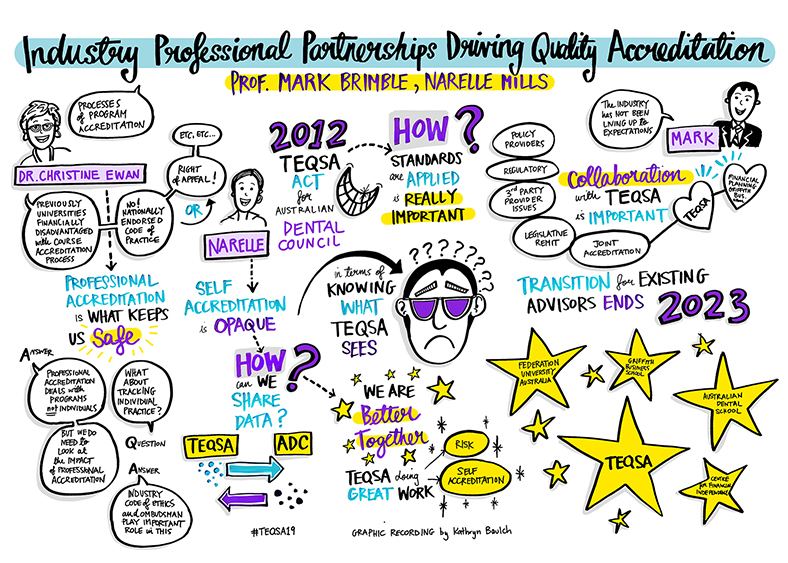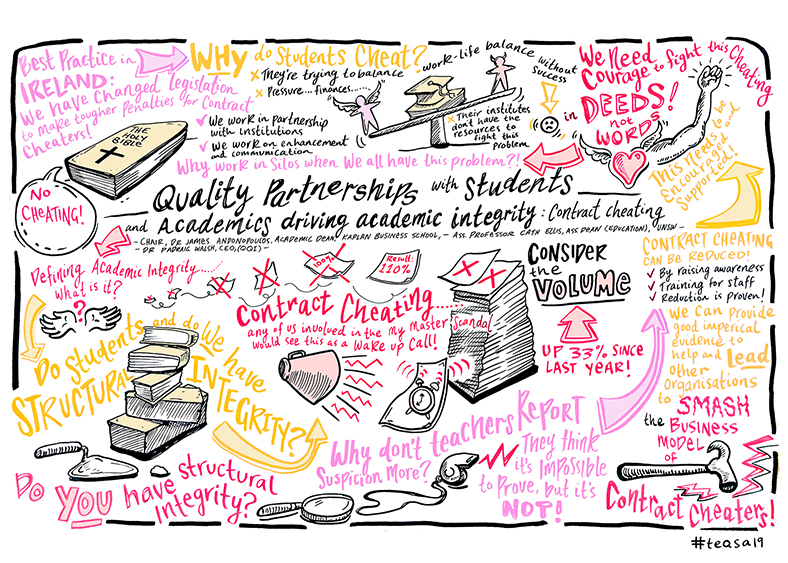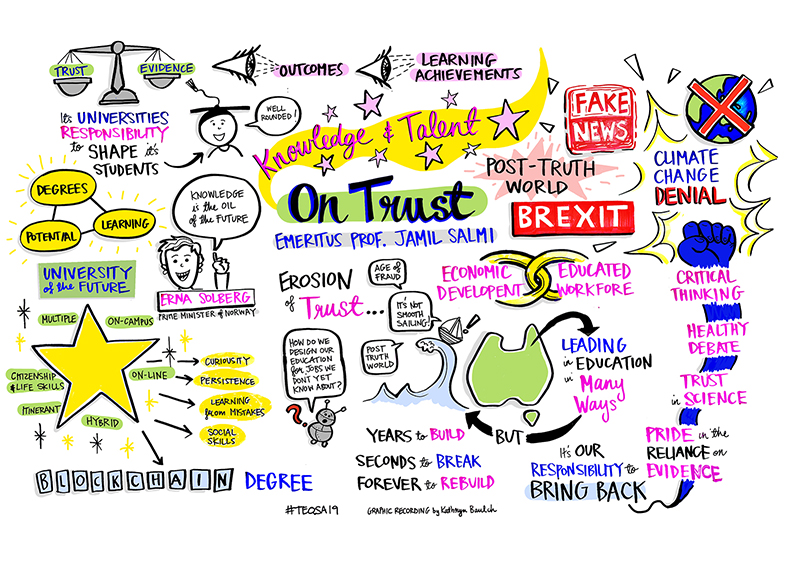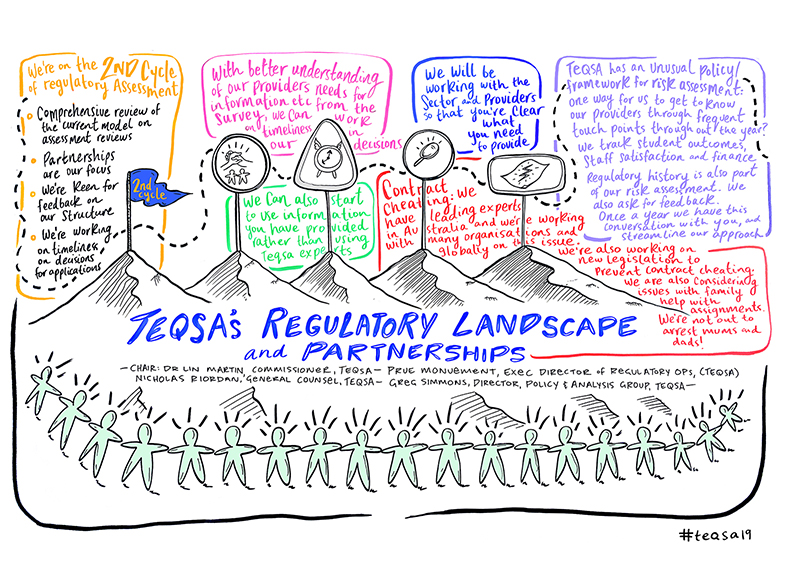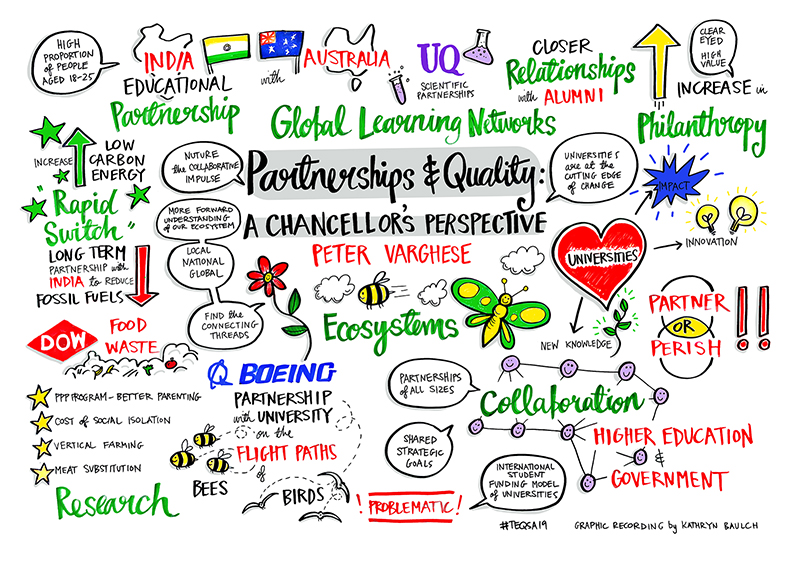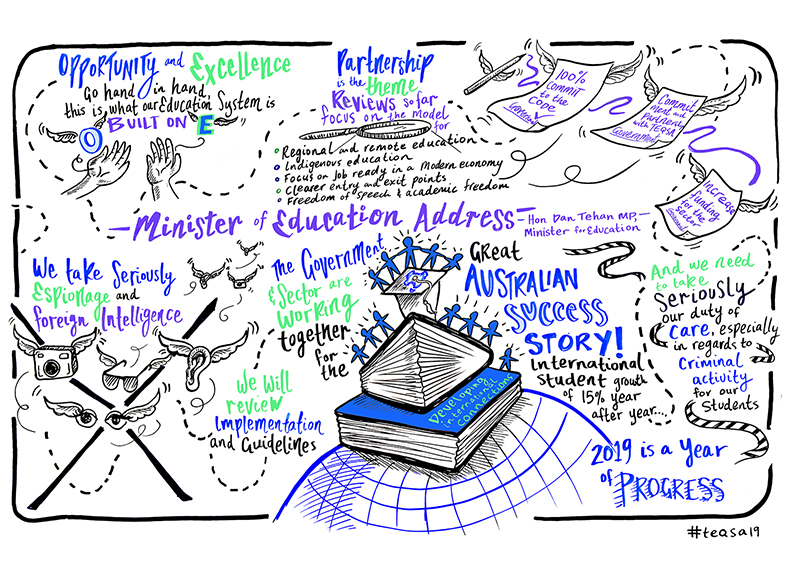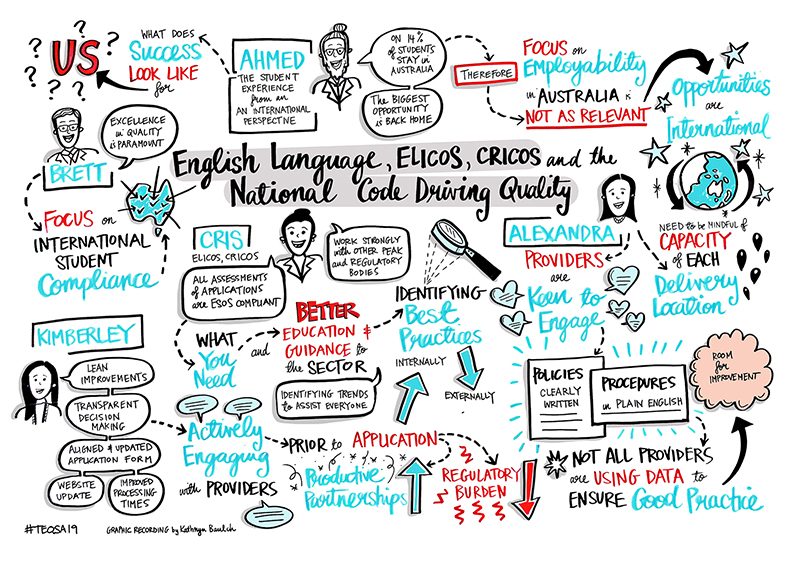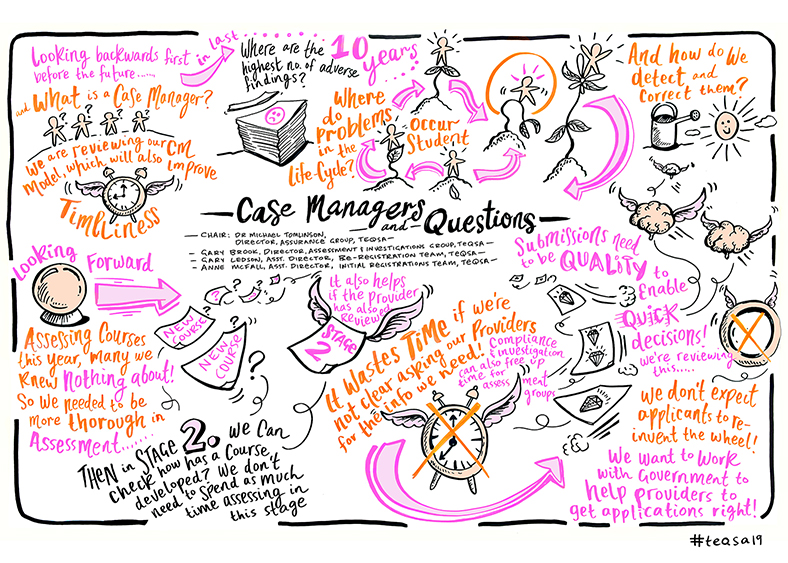The Fourth Annual TEQSA Conference was held from 27 to 29 November 2019 at the Sofitel on Collins in Melbourne.
The theme was Partnerships Driving Quality and the conference focused on the ways in which providers can collaborate with industry, professional accreditation bodies and regulatory authorities to benefit students, the higher education sector and Australian education.
Keynote speakers explored aspects of the global higher education landscape and demonstrated how partnerships can transform the content and delivery of education over the next decade. The conference program offered the opportunity to attend thought-provoking plenaries, interactive sessions and networking events – ideal for generating new ideas and contacts.
Graphic recordings of 2019 plenary sessions
The graphic recordings of each plenary session from the 2019 TEQSA Annual Conference are now available.
Conference photos
A selection of photos is available on our Conference website.
Conference presentation slides
The presentation slides for the concurrent sessions are available on our Conference website:
The slides for the plenary sessions are available below:
- Anthony McClaran, State of the Sector 2019
- Cath Ellis, Quality Partnerships with Students and Academics Driving Academic Integrity: Contract Cheating
- Jamil Salmi, On Trust
- Minister of Education's speech
Conference videos
Videos of the plenary sessions are available on our YouTube channel.
- View Anthony McClaran's Opening Address: State of the Sector 2019 (opens in YouTube)
- View George Megalogenis's Keynote Address: State of Australia 2019 (opens in YouTube)
- View Jamil Salmi: On Trust (opens in YouTube)
- View the Minister of Education's Address (opens in YouTube)
- View Diverse Partnerships Driving Quality (Chair: Craig Robertson) (opens in YouTube)
- View Jane den Hollander: Partnerships and Regulation (opens in YouTube)
- View the Higher Education Standards Panel: Partnerships with the Sector in Driving Quality (opens in YouTube)
- View Students as Partners (opens in YouTube)
- View Partnerships and Quality in Rural and Remote Higher Education (opens in YouTube)
- View Industry Professional Partnerships Driving Quality Accreditation (opens in YouTube)
- View Quality Partnerships with Students and Academics Driving Academic Integrity (opens in YouTube)
- View TEQSA’s Regulatory Landscape and Partnerships (opens in YouTube)
- View English Language, ELICOS, CRICOS and the National Code Driving Quality (opens in YouTube)
- View Case Managers and Questions (opens in YouTube)

